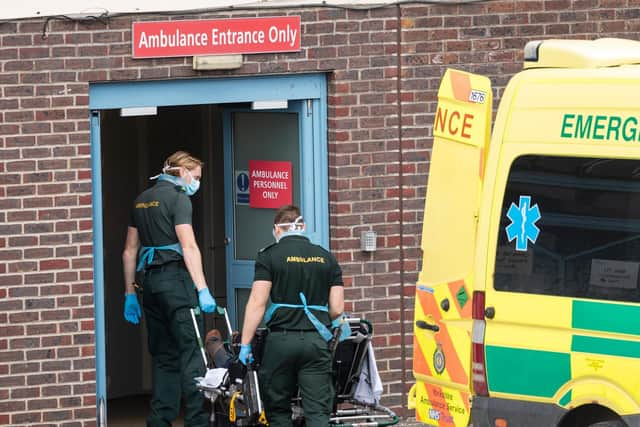Cost of NI lockdown: 885 more than expected deaths recorded in Northern Ireland
and live on Freeview channel 276
Latest figures published today by NISRA show that there were 885 excess deaths from March 1 to June 30 2020, 17.4% above expected levels (average deaths for the same period over the last five years).
In the same period, there were 837 COVID-19 related deaths.
The number of excess deaths for females (474) is higher than that for males (411), whilst the number of COVID‑19 related deaths is slightly higher (421 compared to 416).


Advertisement
Hide AdAdvertisement
Hide AdThe vast majority of excess deaths (78.4%) and COVID‑19 related deaths (79.8%) are accounted for by those aged 75 and over.
In this age group, excess deaths were 21.3% above expected levels, compared to 17.4% for all ages.
For both males and females aged 55 to 64 (older working age), excess deaths as a proportion of expected levels, were higher than the equivalent proportions for those aged 65 to 74 (younger pensionable age).
The number of deaths in hospitals was slightly lower than expected levels, despite 434 COVID‑19 related deaths occurring in hospitals.
Advertisement
Hide AdAdvertisement
Hide AdCare homes had similar levels of excess deaths (336) and COVID‑19 related deaths (346). In contrast, the majority of excess deaths (556 or 62.8%) occurred at home, while 44 COVID-19 related deaths occurred at home.
Belfast LGD had the largest number of excess deaths (218), accounting for a quarter (24.6%) of the total number of excess deaths in Northern Ireland.
However, Antrim & Newtownabbey LGD had the highest excess deaths as a proportion above expected levels (28.4%), while Mid Ulster LGD had the lowest (7.0%).
Excess deaths were highest in the least deprived areas, with just over a 20% increase in deaths compared to expected levels.
Advertisement
Hide AdAdvertisement
Hide AdExcess deaths were lower in rural areas at 14.3% above expected levels, compared to 18.7% in urban areas.
Excess deaths were associated with proximity of area of main residence to Belfast, with decreasing proportions of excess deaths with increasing travel times to Belfast, from 23.3% within 20 minute drive-time to 8.8% for a drive‑time between 45 and 60 minutes.
